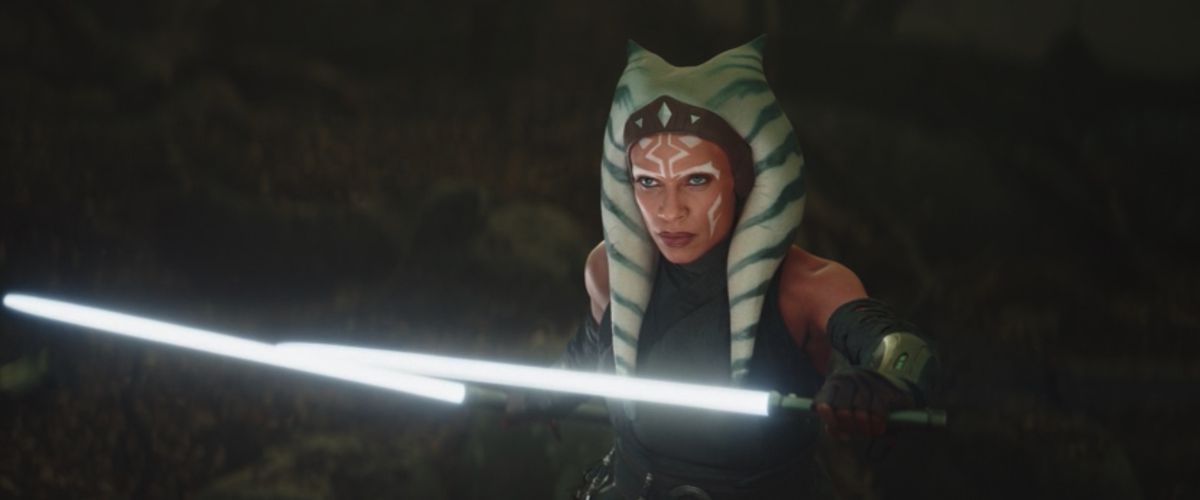Ahsoka’s finale goes all in Star Wars’ weirdest tangent: the Mortis gods
We all knew it Ahsoka would take up the intrigues of Star Wars: Clone Wars And Rebels. But I didn’t expect its finale to repeat the most confusing piece of Star Wars cinematic media I’ve ever consumed.
Nevertheless, here we are: With an owl and a few statues, Ahsoka said “It’s time for the gods of Mortis, baby!”
The Gods of Mortis are a trio of Star Wars characters featured in Star Wars: Clone Wars writing room by Georges Lucasand it’s hard to explain exactly What they are part of the Star Wars canon, due to their vagueness Clone Wars clears them up. They are secret beings of immense and largely unknown power, surrounded by legends: they can transform their own forms, grasp lightsabers by the blade as if nothing had happened, manipulate visions of the Force, and one of them loves murder. Are they filled with celestial beings? Or are they just powerful Force users? It’s ambiguous.
Image: Lucasfilm
Outside of fiction, they read like Lucas using the structure of the fable to describe an endless cycle of struggle between Jedi and Sith. The Mortis “gods” form a pantheon of three: the altruistic and life-giving Daughter; the selfish and violent Son; and the Father who seeks to prevent each of them from dominating the other. To this end, the Father sequesters them all in a dream realm called Mortis (which may, or may not, or may only sometimes have a defined location in real space) where the landscape itself represents the battle of the natures of the Son and of the Girl. with seasons that change as quickly as the time.
Although images of the Mortis gods appear in Rebels” Last season, there is really only one story of the Mortis gods: a three-part arc in the third season of Clone Wars, including the episodes “Overlords”, “Altar of Mortis”, and “Ghosts of Mortis”. Obi-Wan, Anakin, and Ahsoka follow an ancient Jedi distress signal to a giant crystal floating in space, which quickly pulls their shuttle inside, where they meet the Daughter, the Son, and the Father. The father brought them here because he heard that Anakin might be the chosen one who could take his place as his children’s jailer/arbiter.

Image: Lucasfilm
From there, the story moves forward feverishly. It’s not good, but it’s a fascinating and strange experience, like listening to a friend describe a sprawling nightmare. I can’t recommend it, but at the same time I wish more people I know would watch it so that, like a strange dream, I would have someone to talk to about it.
(Ed. note: The rest of this article contains spoilers for the Mortis Gods episodes, in case I’ve already convinced you to watch them.)
Here are some things that happen in the Mortis Gods arc: Ahsoka dies. For example, a child dies directly on screen. Later, the Girl pours her dying life force into Ahsoka to bring her back. The Son gives Anakin a true vision of his future as Darth Vader. Horrified by the news that he will eventually turn to the dark side, Anakin responds by immediately turn to the dark side. Later, the father erases his memory of the vision so he can return to normal.
At the end of the episode, Obi-Wan, Anakin, and Ahsoka wake up on their shuttle in space just moments after leaving, as if it was all a dream. But that wasn’t the case. Ahsoka seems to carry some aspects of the Girl with her – until the final scenes of Ahsoka season 1.
From Rebels, Ahsoka’s presence in a story has often coincided with the appearance of an owl-like bird with plumage the same color as the Girl’s character design. Ahsoka herself seems to believe that the bird, which she calls Morai, represents the Daughter.
What does this have to do with Ahsoka season 2 and the owl?

Image: Lucasfilm
The gods of Mortis are very much rooted in the kind of general mythopoeic ideas that Lucas always cited as inspiration for the metaphysics of Star Wars – but they’re still very strange!
After all, “an indefinable manifestation of life that surrounds and binds all matter in the universe and which certain individuals in harmony can be trained to harness for good or evil” is a completely different understanding of the Force than “The Side dark is winning right now.” because the god of the dark side killed his sister, the goddess of the light side.
But it’s exactly this kind of predestined eternal battle – like the Norse gods and Ragnarok, or the Greek gods and the Titans – that echoes Baylan Skoll’s belief in ending the millennial cycle of the Sith and Jedi. And the last time we see him, he’s standing atop a statue of the Father, the Mortis god of balance between darkness and light. Morai the convor bird also visits Ahsoka in the final moments of the series.
To try to say more – about how statues of the Mortis gods appeared in another galaxy, or how the “Force magic” of the witches of Dathomir fits into all this – would be pure nonsense. speculation. Which, I’d wager, is exactly what the Star Wars fandom will do until these elements return in a future TV series.
